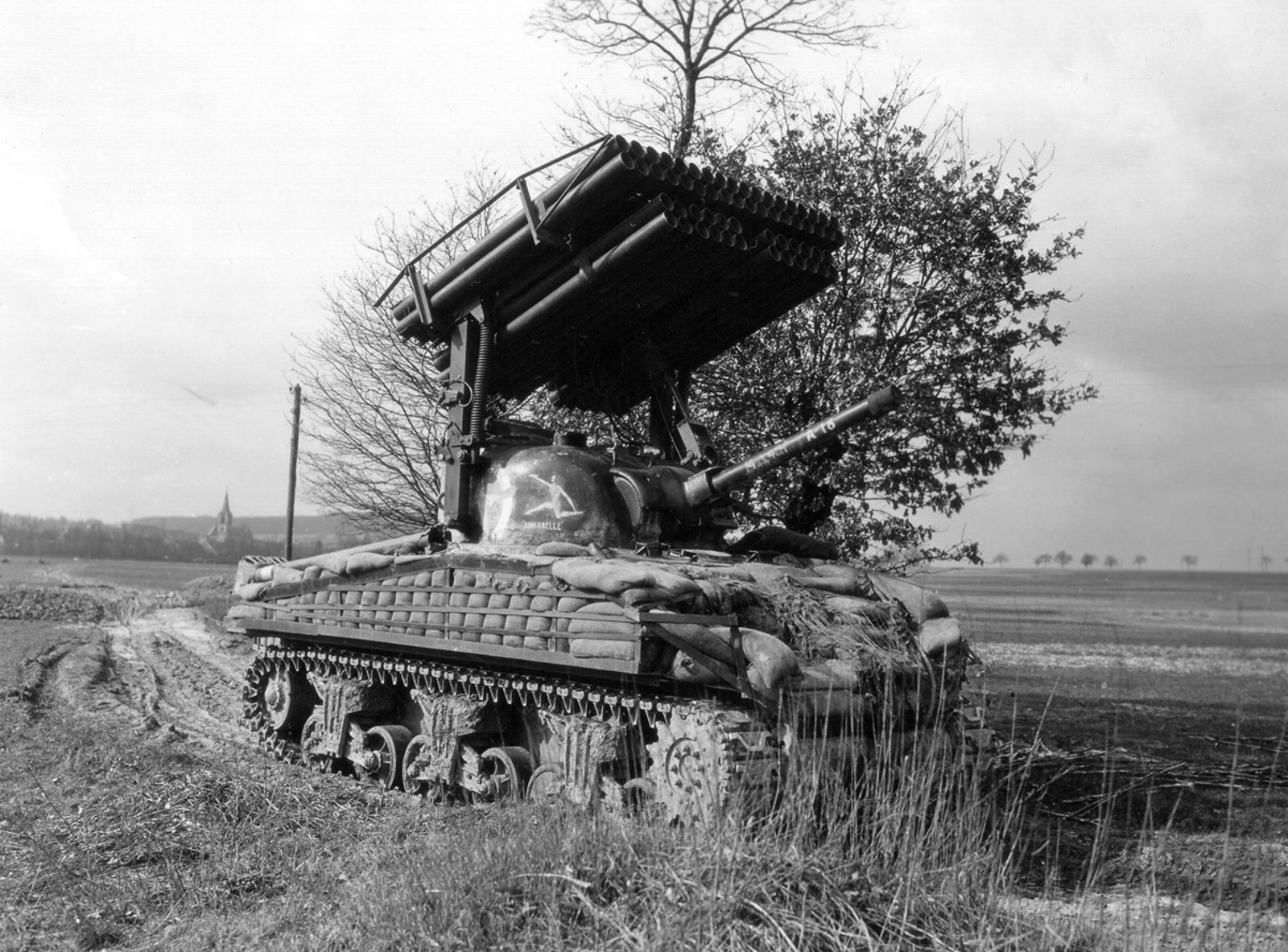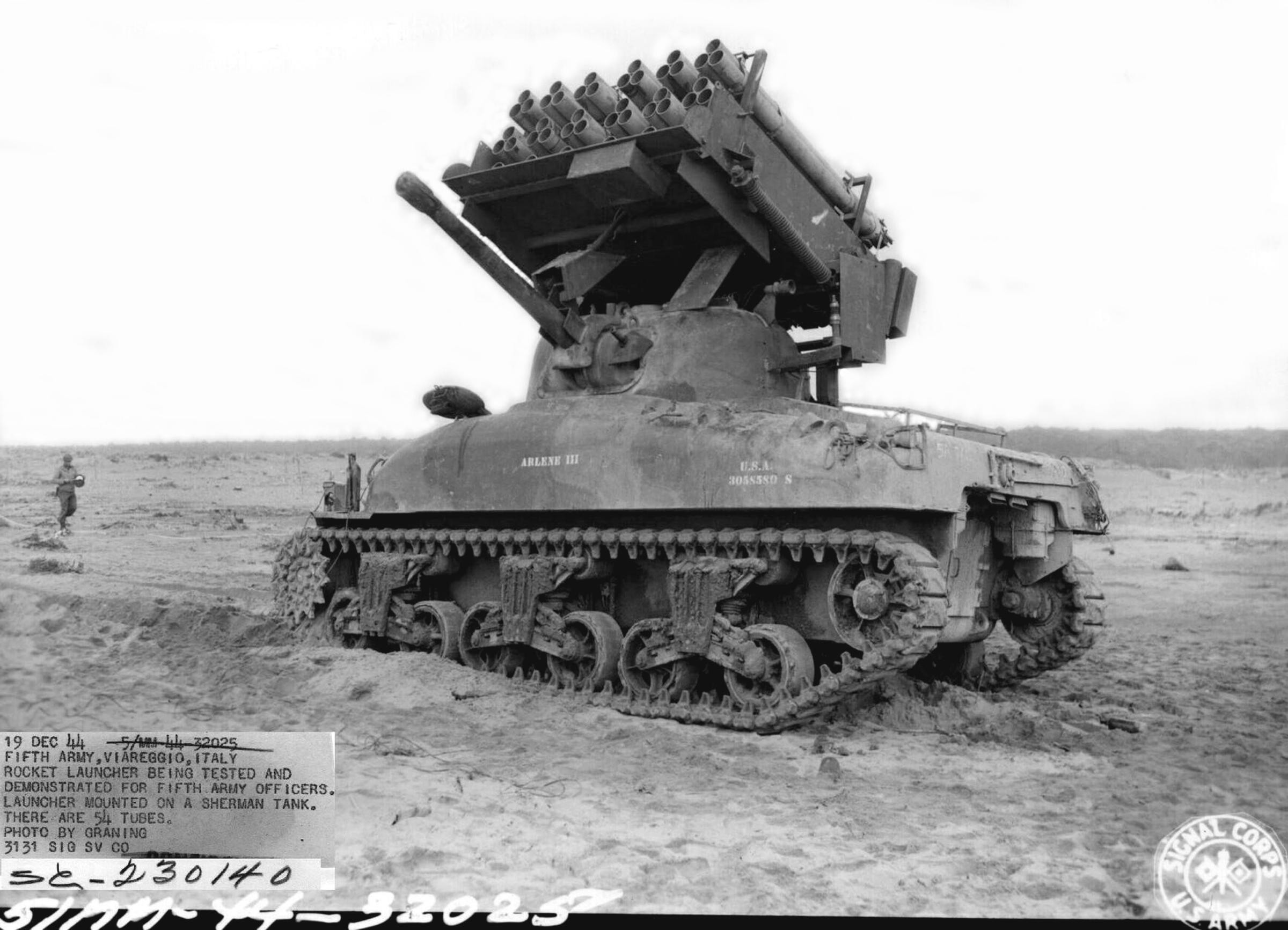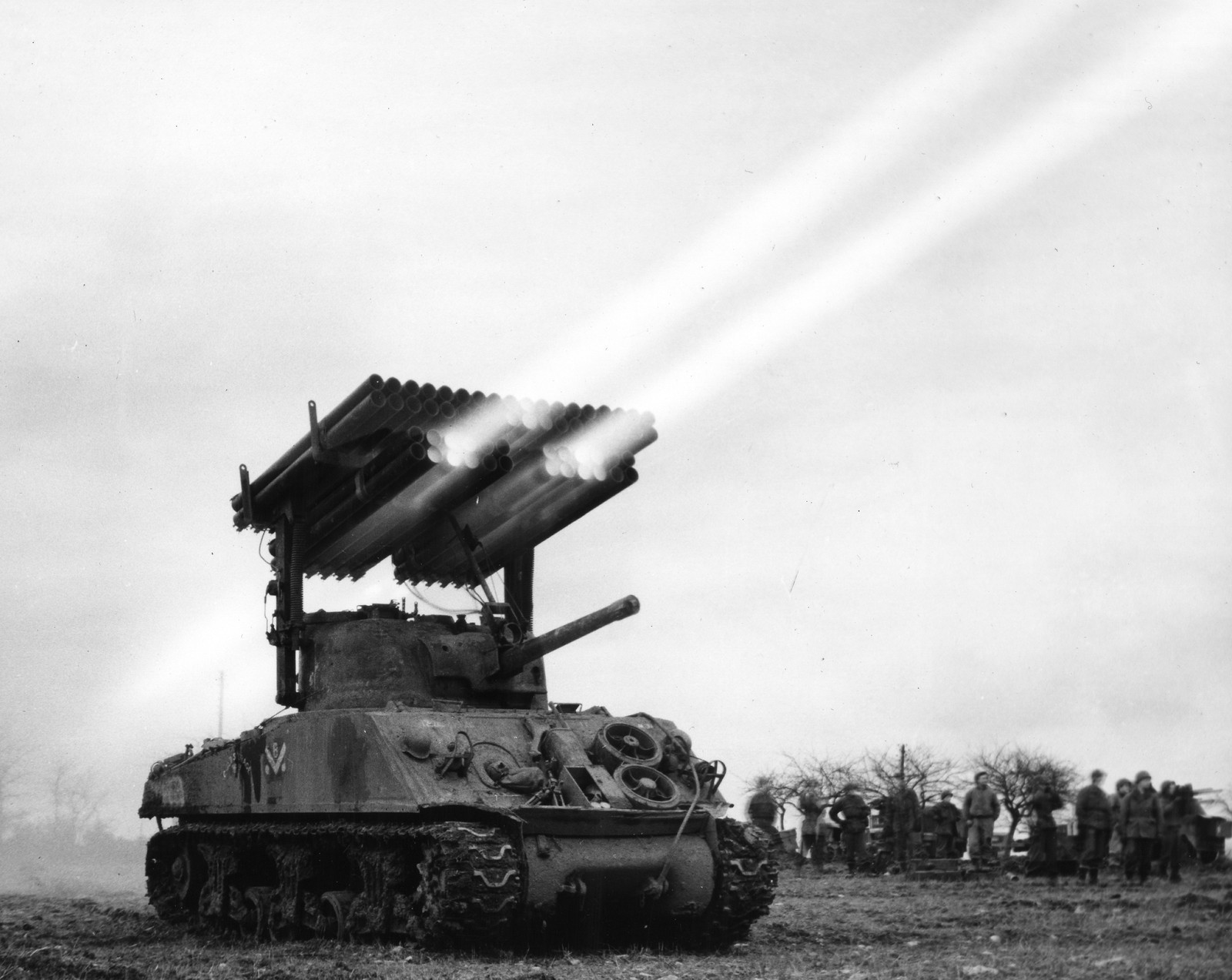Duplex Drives: wow, floating tanks and it worked!
The Duplex Drive Sherman story starts with the British. They came up with the idea of making a canvas skirt system for a tank and tried it on the Valentine tank. It worked so well they went on to try it on their M4A2s, and then on the M4A4s. They worked so well when they were shown to the US Army in a demonstration, the US Army was so impressed they decided to they would use some for the coming D-Day invasion. They had planned on just using Sherman tanks with deep wading kits and LSMs. They would use both.
Though any version of the Sherman could be converted if the M4A4 could, the US chose to only use M4A1 tanks. They wanted the most modern version they could get for the conversions the M4A1 76w, but the first 150 of these tanks were reserved for use in England for crew familiarization. They got M4A1 75 tanks, some late large models in the batch. At first, they thought the conversions could be done in England, but the complication of moving the air cleaner to the inside of the engine compartment made the conversions complicated enough it was decided to build and install the kits on tanks in the US, and the M4A1s were there waiting.
The kits were engineering marvels, if not a little fragile, they still worked very well. I think the impression they were failures comes from a single battalion that mostly sank on D-Day, but they launched into conditions that were known to be very dangerous for the tanks. All the other D-Day DD battalions had the vast majority of their tanks make it into shore just fine and then help a great deal on the landing beaches. The kit was made from a steel frame with rubberized canvas skirts. They were raised by inflating them. There was a little air pump mounted on the right rear of the tank’s engine deck that kept the inflatable parts inflated. Much of the structure that supported the canvas skirts were made of inflatable ribs.
The tank was propelled in the water by a pair of propellers built into a modified idler wheel mount. I don’t think they had a ruder of any kind and the tank was steered by braking with one track or the other. The British converted tanks were slightly different and had sprocket teeth added to the idler. On the American conversions, these sprocket teeth were found to clog with sand and cause tracks to be thrown, so they were removed from the entire run of American made DD tanks. The kits included periscope extensions for the driver and commander so the tanks could, in theory, be operated buttoned up. There were extensions for the head and taillights for use in training only and extensions to the controls so the tank could be driven from outside. While in the water all DD conversions could make 4 ½ MPH.
In use, the biggest drawback was how fragile the skirts were both in and out of the water. Even a small tear would cause the DD to sink. There were several cases of DDs being lost because they tore their skirts driving off the ramp of an LCT. They were also vulnerable to bad weather, and the weather on D-Day was not ideal. It was only deadly for one tank battalion through. The American 741st tank battalion launched 32 DDs 5000 yards from Omaha beach, 1000 more than ideal, into very rough surf conditions. 27 of the DD sank, 3 three from damage to their skirts, the rest foundered in the rough seas. They had it by far the worst accounting for most of the lost DD tanks. Of the 122 total launched, this total is all the DD tanks, British and American, 36 were lost, and that includes all the tanks from the 741st. When they were used in other landings later in the war they had a better success rate. They also came up with metal flaps to cover the screen when it was down, to protect it from being torn on just about anything.
For more detailed info, check out the info on the Sherman Minutia Site.
M4 105 with dozer kit.
Dozers:
Dozers got so big, it has its own post! Click here to go to it.
Hedge Row cutters:
Hedge Row cutters were developed during the fighting in the hedgerows of Normandy, They were basically sections of tank traps from the beach, cut into crude cutting blades and mounted to the front of a Sherman tank. They allowed the Sherman to charge through a hedgerow, cutting a Sherman wide hole through it. They probably looked scary to the Germans too.
Calliope: A Sherman with Rockets!
The E9 kit:
Sources: Armored Thunderbolt by Zaloga, Yeide’s The Infantries Armor, and Steel Victory, Sherman by Hunnicutt, The Sherman Minutia Site, Son of a Sherman by Stansell and Laughlin, M4 Sherman tank at war by Green






